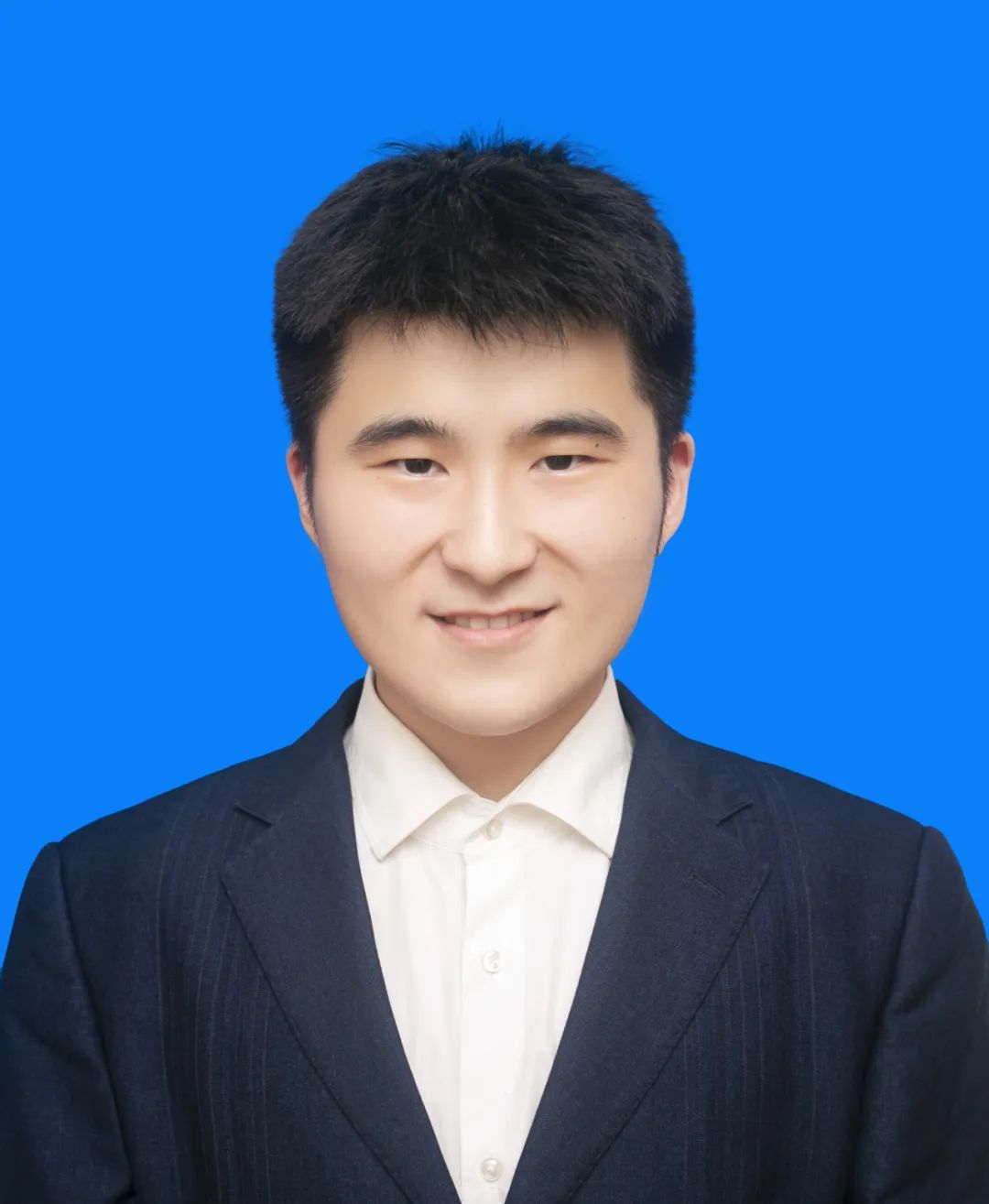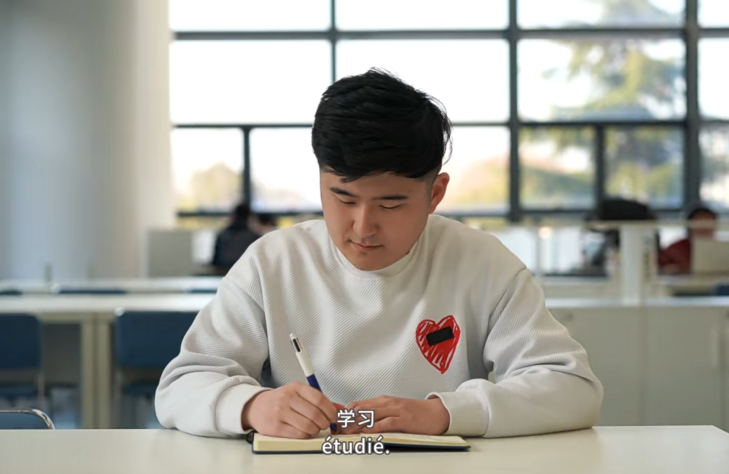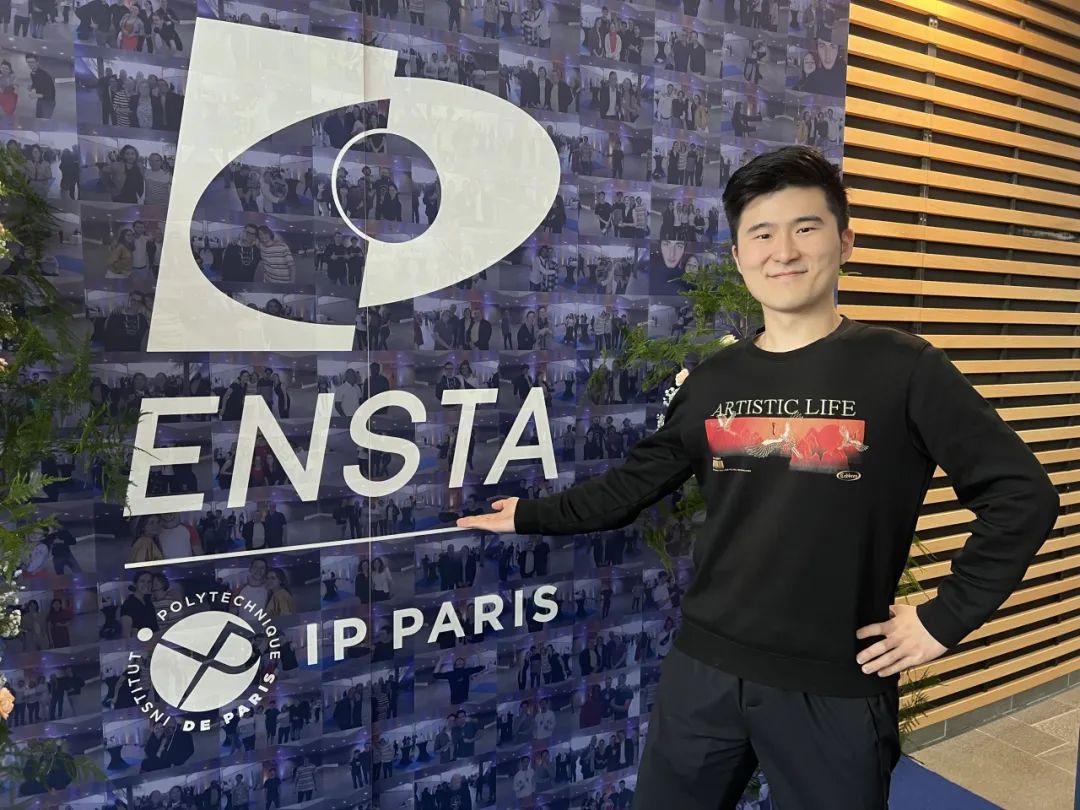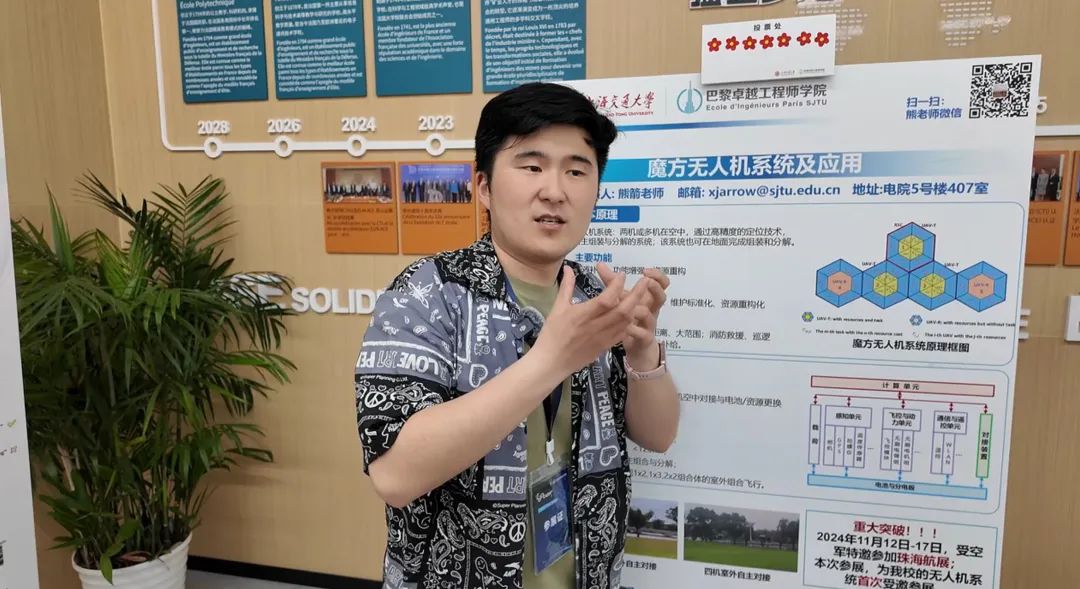
Guan Xinyuan is SPEIT's outstanding graduate for the year 2025, majoring in Information Engineering and French. His research focuses on drone applications, modular drones and their control problems, and he will continue his studies in the field of robotics in the future.

01
Childhood curiosity sparks robotics dream
From an early age, Guan Xinyuan was interested in robotics. At SPEIT, he took a large number of mathematics and physics courses during his undergraduate studies, giving him a solid grounding in mathematics and science. After school, he took part in computer vision research projects, gaining a basic understanding of artificial intelligence, a new technology that gives machines a soul, and gradually developing a keen interest in the field. In researcher Xiong Jian's group, he became involved in the development of a new type of machine model, the combined drone, in the hope of making his own contribution to this emerging field.

02
From the classroom at Shanghai Jiao Tong University to the laboratory in France
In his first year of graduate studies, Guan Xinyuan went to ENSTA Paris for a year and a half as a double degree exchange student, and achieved outstanding results in both his coursework and research. At the same time, he worked hard to participate in research work, and became involved in drone algorithm research in the university's laboratory.


Studying in France broadened Guan Xinyuan's horizons, gave him a better understanding of the current situation in domestic and international industry, and made him more determined to devote himself to research in the field of robotics and machine intelligence.
03
Taking the initiative to solve technical problems
In April 2024, Guan Xinyuan successfully completed his double degree exchange in France and returned to SPEIT to continue his master's degree while participating in the new combined drone project. As the current autonomy of small drones is usually only around half an hour, the new aircraft could make many long-term aerial missions possible, such as search and rescue, exploration and so on. The process of developing the new algorithm was very laborious and, due to the lack of technical reserves, it was necessary to read many books and works on the subject to find the methods that could succeed. At the same time, the final project was less than a year away from completion, leaving insufficient time to acquire additional knowledge. Guan Xinyuan gave free rein to the spirit of scientific research, which consists in not being afraid of difficulties and daring to study, and worked hard day after day, seizing both knowledge and engineering development, completing the development of the multi-computer simulation environment that had long been stagnating in the laboratory while completing the knowledge of control theory, and gradually completing the derivation and deployment of the final algorithm. Today, the drone model can fly normally in a multicopter combination and has excellent wind resistance performance, which will enable it to be deployed in practical applications in the future.
More than six years of study and research at SPEIT have given Guan Xinyuan a solid professional foundation, as well as a rich cross-cultural perspective and practical engineering experience. His academic training and research practice in France not only broadened his horizons, but also gave him a better understanding of the opportunities offered by the intelligent transformation of domestic and international industries, and strengthened his determination to continue working in the field of robotics and machine intelligence. In the future, he will continue to visit the world's top engineering schools and universities to further his studies, push back the boundaries of his knowledge and dedicate himself to the development and innovation of China's robotics industry, achieving practical and technologically advanced results.








